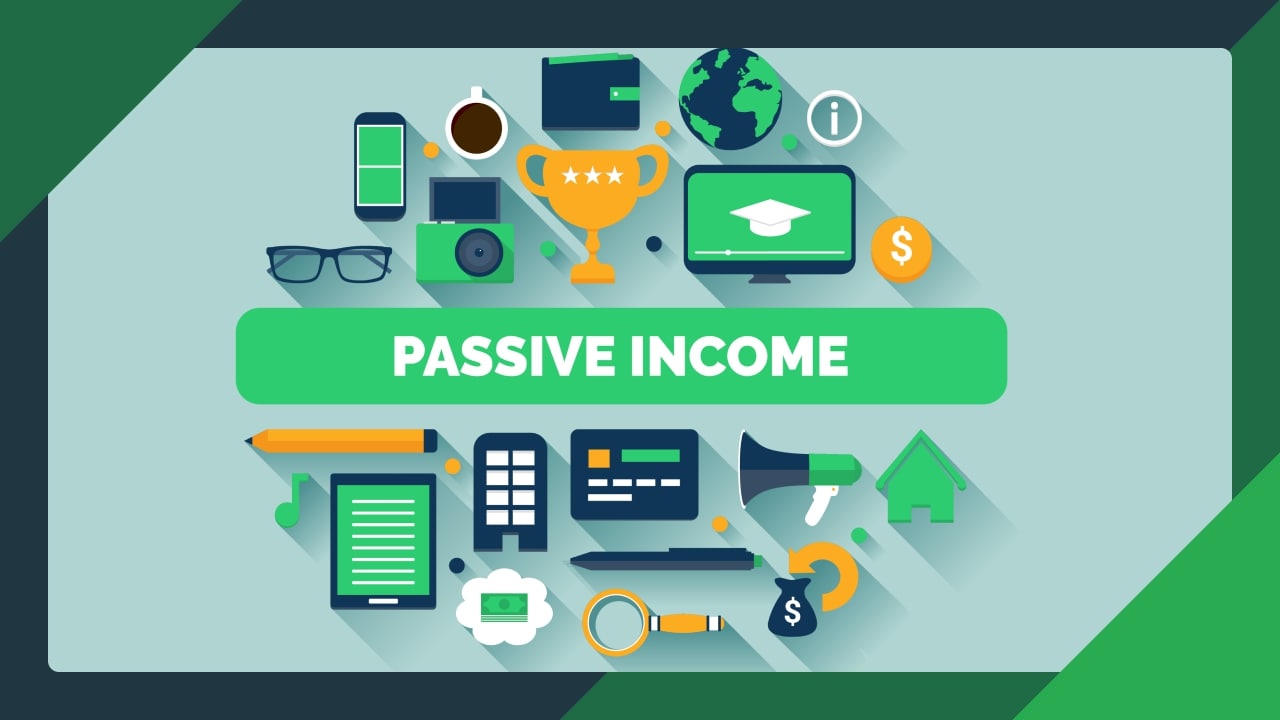
Charting Your Course to Freedom: A Comprehensive Guide to Financial Independence
Financial independence (FI) – the ability to live comfortably without relying on a paycheck – is a dream shared by many. It’s about having the freedom to pursue your passions, spend time with loved ones, and make choices based on your values, not just your bank balance. While the path to FI requires dedication and discipline, it’s an achievable goal for anyone willing to commit to a strategic plan. This guide will provide a comprehensive roadmap to help you navigate the journey towards financial independence.
1. Defining Your "Why" and Setting Your FI Number:
Before diving into the practical steps, it’s crucial to define your personal "why." Why do you want to be financially independent? Is it to travel the world, start a business, dedicate time to a cause you believe in, or simply spend more time with family? Understanding your motivation will fuel your commitment during challenging times.
Next, you need to calculate your "FI number" – the amount of money you need to live comfortably without working. A common rule of thumb is the "4% rule." This rule suggests that you can safely withdraw 4% of your investment portfolio each year without depleting the principal.
- Calculate Your Annual Expenses: Track your spending for a few months to get a clear picture of your current lifestyle expenses. Include everything: housing, food, transportation, healthcare, entertainment, and other recurring costs.
- Estimate Future Expenses: Consider how your expenses might change in the future. Will you have children? Do you plan to move to a different location? Factor in potential inflation.
- Apply the 4% Rule (or Adjust Accordingly): Divide your annual expenses by 0.04 (4%) to determine your FI number. For example, if your annual expenses are $50,000, your FI number would be $1,250,000 ($50,000 / 0.04 = $1,250,000).
- Consider Alternative Withdrawal Rates: The 4% rule is a guideline, not a guarantee. Some financial advisors recommend a more conservative withdrawal rate (e.g., 3% or 3.5%) to increase the longevity of your portfolio, especially in periods of low interest rates or high inflation. Research and consider your own risk tolerance.
2. Mastering Your Finances: Budgeting and Tracking
Financial independence starts with understanding where your money goes. Budgeting and tracking your expenses are fundamental.
- Choose a Budgeting Method: Several budgeting methods exist, including:
- The 50/30/20 Rule: Allocate 50% of your income to needs, 30% to wants, and 20% to savings and debt repayment.
- Zero-Based Budgeting: Allocate every dollar of your income to a specific category, ensuring that your income minus your expenses equals zero.
- Envelope Budgeting: Use cash for specific spending categories (e.g., groceries, entertainment) to control spending.
- Track Your Expenses: Use budgeting apps (Mint, YNAB, Personal Capital), spreadsheets, or even a notebook to track your spending. Categorize your expenses to identify areas where you can cut back.
- Review and Adjust Regularly: Your budget is not set in stone. Review it regularly (at least monthly) and adjust it as needed based on your changing circumstances and financial goals.
3. Debt Reduction: A Critical Step
High-interest debt, such as credit card debt, can significantly hinder your progress toward FI. Prioritize debt reduction.
- List Your Debts: List all your debts, including the interest rate and minimum payment.
- Choose a Debt Reduction Strategy:
- Debt Avalanche: Focus on paying off the debt with the highest interest rate first, regardless of the balance. This strategy saves you the most money in the long run.
- Debt Snowball: Focus on paying off the debt with the smallest balance first, regardless of the interest rate. This strategy provides quick wins and can be motivating.
- Increase Your Payments: Pay more than the minimum payment on your debts whenever possible. Even a small increase can make a significant difference over time.
- Avoid Taking on New Debt: Be mindful of your spending habits and avoid accumulating new debt while you’re working to pay off existing debt.
4. Increasing Your Income: Earning More is Key
While cutting expenses is important, increasing your income can accelerate your path to FI.
- Negotiate a Raise: Research industry standards and prepare a compelling case for why you deserve a raise.
- Pursue Additional Education or Training: Acquiring new skills or certifications can increase your earning potential.
- Start a Side Hustle: Explore opportunities to earn extra income outside of your primary job. This could include freelancing, consulting, selling products online, or driving for a ridesharing service.
- Invest in Yourself: Read books, attend workshops, and network with people in your field to improve your skills and knowledge.
5. Investing Wisely: Making Your Money Work for You
Investing is essential for building wealth and achieving FI.
- Start Investing Early: The power of compounding is greatest when you start investing early.
- Take Advantage of Employer-Sponsored Retirement Plans: Contribute enough to your 401(k) or other retirement plan to take full advantage of any employer matching contributions. This is essentially free money.
- Open a Roth IRA or Traditional IRA: IRAs offer tax advantages that can help you grow your investments more quickly.
- Invest in a Diversified Portfolio: Diversify your investments across different asset classes (stocks, bonds, real estate) to reduce risk. Consider using low-cost index funds or ETFs (exchange-traded funds) to achieve diversification.
- Rebalance Your Portfolio Regularly: Rebalance your portfolio periodically to maintain your desired asset allocation. This involves selling some assets that have performed well and buying assets that have underperformed.
- Consider Real Estate: Real estate can be a valuable investment, but it also comes with significant responsibilities and risks. Carefully research any real estate investment before making a purchase.
- Avoid Speculative Investments: Be wary of investments that promise high returns with little risk. These investments are often scams.
- Seek Professional Advice: If you’re unsure how to invest, consider seeking advice from a qualified financial advisor.
6. Automating Your Finances: Setting It and Forgetting It (Mostly)
Automating your finances can save you time and effort and help you stay on track with your financial goals.
- Automate Savings: Set up automatic transfers from your checking account to your savings or investment accounts.
- Automate Bill Payments: Enroll in automatic bill payments to avoid late fees and maintain a good credit score.
- Automate Investment Contributions: Set up automatic contributions to your retirement accounts and brokerage accounts.
7. Living Frugally (Not Miserly): Mindful Spending
Frugality is about being mindful of your spending and making conscious choices about where your money goes. It’s not about deprivation, but about prioritizing what’s truly important to you.
- Cook at Home More Often: Eating out is expensive. Cooking at home can save you a significant amount of money.
- Find Free or Low-Cost Entertainment: Take advantage of free activities in your community, such as parks, museums, and community events.
- Cut Unnecessary Expenses: Review your spending habits and identify areas where you can cut back. Do you really need that premium cable package or that expensive gym membership?
- Shop Around for Insurance: Compare quotes from different insurance companies to find the best rates.
- Buy Used Instead of New: Consider buying used cars, furniture, and other items to save money.
8. Staying the Course: Discipline and Patience
The path to financial independence is a marathon, not a sprint. It requires discipline, patience, and a long-term perspective.
- Track Your Progress: Monitor your progress towards your FI number regularly. This will help you stay motivated and make adjustments to your plan as needed.
- Celebrate Milestones: Reward yourself for achieving milestones along the way. This will help you stay engaged and motivated.
- Don’t Compare Yourself to Others: Everyone’s financial journey is different. Focus on your own goals and progress, and don’t get discouraged by comparing yourself to others.
- Stay Informed: Continue to learn about personal finance and investing. Read books, articles, and blogs, and attend workshops and seminars.
- Be Prepared for Setbacks: Life is full of unexpected events. Be prepared for setbacks and have a plan for how you will deal with them.
- Maintain a Positive Mindset: Believe that you can achieve financial independence. A positive mindset will help you stay motivated and overcome challenges.
Financial independence is a journey that requires commitment, discipline, and a strategic plan. By defining your "why," mastering your finances, reducing debt, increasing your income, investing wisely, automating your finances, living frugally, and staying the course, you can chart your own course to freedom and achieve your financial goals. Remember, it’s not about becoming rich; it’s about having the freedom to live the life you want. Good luck!


